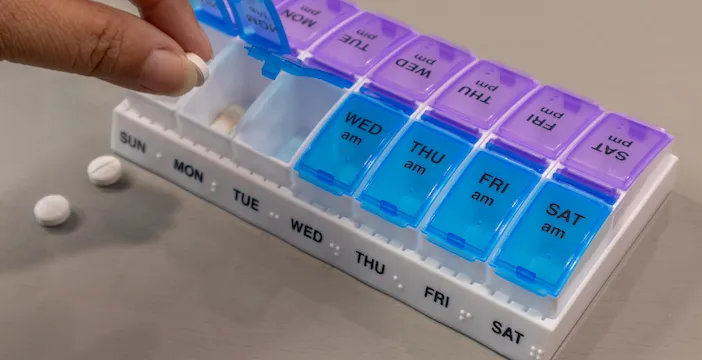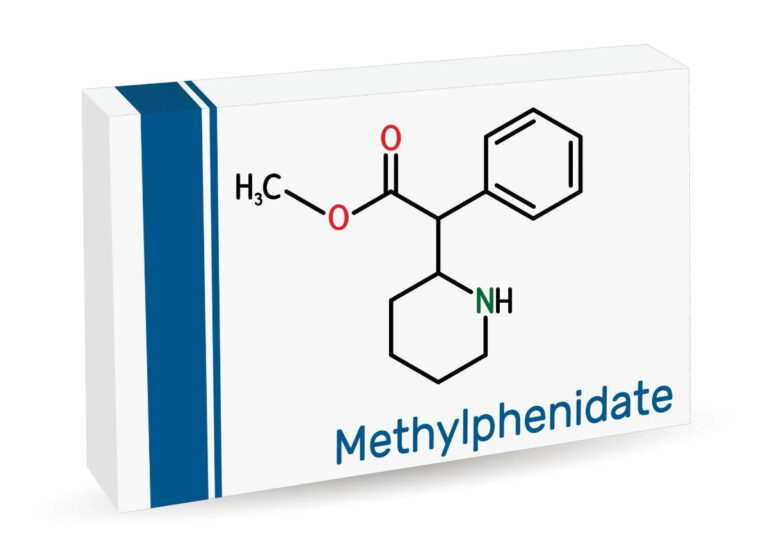Modafinil for Narcolepsy: Does It Really Help With Excessive Sleepiness?
🚀 Modafinil is one of the most commonly prescribed medications for narcolepsy, a chronic sleep disorder that causes excessive daytime sleepiness (EDS) and sudden sleep attacks.
But how effective is Modafinil for narcolepsy? And how does it compare to other treatment options? Let’s break it down.
😴 What is Narcolepsy?
Narcolepsy is a neurological disorder that disrupts the brain’s ability to regulate sleep-wake cycles. Common symptoms include:
✔ Excessive daytime sleepiness (EDS) – Sudden and overwhelming sleepiness during the day.
✔ Cataplexy – Sudden muscle weakness triggered by emotions (seen in Narcolepsy Type 1).
✔ Sleep paralysis – Temporary inability to move or speak while falling asleep or waking up.
✔ Hallucinations – Vivid, dream-like experiences during sleep transitions.
🧠 Narcolepsy is caused by a deficiency in hypocretin (orexin), a neurotransmitter that regulates wakefulness. (Scammell, 2015)
💊 How Does Modafinil Help with Narcolepsy?
Modafinil is a wakefulness-promoting agent that helps reduce excessive daytime sleepiness (EDS) in narcolepsy patients. It works by:
✅ Increasing dopamine & norepinephrine levels – Enhances alertness without causing jitteriness.
✅ Stimulating the hypothalamus – Activates the brain’s wakefulness center.
✅ Inhibiting GABA – Reduces signals that promote sleepiness.
📖 Studies show that Modafinil significantly improves wakefulness and cognitive function in narcoleptic patients. (Bastuji & Jouvet, 1988)
🔬 Modafinil vs. Other Narcolepsy Treatments
| Treatment | Effectiveness | Common Side Effects | Abuse Potential | FDA Approved? |
|---|---|---|---|---|
| Modafinil (Provigil) | ⭐⭐⭐⭐ | Headache, nausea, insomnia | Low | ✅ Yes |
| Armodafinil (Nuvigil) | ⭐⭐⭐⭐ | Similar to Modafinil | Low | ✅ Yes |
| Sodium Oxybate (Xyrem) | ⭐⭐⭐⭐⭐ | Dizziness, nausea, sleep disturbances | Moderate | ✅ Yes |
| Amphetamines (Adderall, Ritalin) | ⭐⭐⭐ | Increased heart rate, anxiety, insomnia | High | ✅ Yes |
| Pitolisant (Wakix) | ⭐⭐⭐⭐ | Insomnia, weight loss, headache | Low | ✅ Yes |
📌 While stimulants like Adderall are also used, they have a higher risk of dependence and side effects.
🗣 Expert Consensus on Modafinil for Narcolepsy
Medical research consistently recognizes Modafinil as a first-line treatment for excessive daytime sleepiness (EDS) in narcolepsy due to its effectiveness and safety profile:
📌 Hirai, N., & Nishino, S. (2021). Recent advances in the treatment of narcolepsy
“Because of its high safety and low side-effect profiles, modafinil has become the first-line treatment of choice for EDS associated with narcolepsy.”
PubMed
📌 Barateau, L., Lopez, R., & Dauvilliers, Y. (2016). Management of Narcolepsy
“First-line medications should be stimulants such as modafinil, armodafinil, or sodium oxybate.”
PubMed
📌 Billiard, M. (2007). Narcolepsy: Current treatment options and future approaches
“Modafinil has replaced methylphenidate and amphetamine as the first-line treatment of excessive daytime sleepiness (EDS) and sleep attacks.”
PMC
✅ These sources confirm that Modafinil is a widely recommended treatment for managing excessive daytime sleepiness in narcolepsy.
⚠ Risks & Side Effects of Modafinil
Modafinil is generally well-tolerated, but some users experience side effects, ranging from mild to severe.
Common Side Effects:
✔ Headache – The most frequently reported side effect.
✔ Nausea – Can occur, especially at higher doses.
✔ Nervousness & Anxiety – Some users report increased restlessness.
✔ Insomnia – Can disrupt sleep if taken too late in the day.
📌 Studies confirm that headaches and nausea are the most commonly reported side effects of Modafinil. (Robertson & Hellriegel, 2003)
Serious Side Effects (Rare but Severe):
❗ Severe Skin Reactions – Cases of Stevens-Johnson syndrome (SJS) have been reported.
❗ Psychiatric Symptoms – May include hallucinations, agitation, or mania in rare cases.
❗ Heart-Related Risks – Increased blood pressure and irregular heartbeat in some patients.
📌 The FDA has issued warnings about the potential risk of SJS in Modafinil users. (FDA Safety Alert)
What to Do If You Experience Severe Side Effects?
🚨 Stop taking Modafinil immediately and seek medical help if you experience:
- Skin reactions (rash, blistering, peeling skin)
- Chest pain or irregular heartbeat
- Extreme mood changes, hallucinations, or suicidal thoughts
✅ Always consult a healthcare professional before starting or stopping Modafinil.
⚖ Is Modafinil Legal?
🚨 Depends on where you live.
📌 United States: Prescription-only, Schedule IV controlled substance
📌 UK & Canada: Prescription-only, illegal to buy without one
📌 India & Mexico: Available without a prescription
❗ Warning: Many online pharmacies sell counterfeit Modafinil. Always buy from a licensed pharmacy with a doctor’s prescription.
📝 Key Takeaways
✔ Modafinil is an effective first-line treatment for narcolepsy, especially for excessive daytime sleepiness.
✔ Works by increasing dopamine and norepinephrine to promote wakefulness.
✔ Compared to stimulants, Modafinil has a lower risk of abuse and fewer side effects.
✔ Other treatments like sodium oxybate may be more effective for symptoms like cataplexy.
✔ Not a cure—lifestyle adjustments and other medications may still be needed.
📌 Always consult a sleep specialist before starting Modafinil or changing treatments.
📚 References (APA Format)
- Bastuji, H., & Jouvet, M. (1988). Successful treatment of idiopathic hypersomnia and narcolepsy with Modafinil. Progress in Neuro-Psychopharmacology & Biological Psychiatry, 12(5), 695-700. https://pubmed.ncbi.nlm.nih.gov/2906157/
- Scammell, T. E. (2015). Narcolepsy. The New England Journal of Medicine, 373(27), 2654-2662. https://pubmed.ncbi.nlm.nih.gov/26716917/
- Hirai, N., & Nishino, S. (2021). Recent advances in the treatment of narcolepsy. Current Opinion in Pulmonary Medicine, 27(6), 519-524. https://pubmed.ncbi.nlm.nih.gov/21748548/
- Barateau, L., Lopez, R., & Dauvilliers, Y. (2016). Management of narcolepsy. Current Treatment Options in Neurology, 18(10), 52. https://pubmed.ncbi.nlm.nih.gov/27549768/
- Billiard, M. (2007). Narcolepsy: Current treatment options and future approaches. Neuropsychiatric Disease and Treatment, 3(4), 533-543. https://pmc.ncbi.nlm.nih.gov/articles/PMC2526380/
- Robertson, P., & Hellriegel, E. T. (2003). Clinical pharmacokinetic profile of Modafinil. Clinical Pharmacokinetics, 42(2), 123-137. https://pubmed.ncbi.nlm.nih.gov/12537513/
- U.S. Food & Drug Administration (2007). Modafinil (Provigil) label update: Stevens-Johnson syndrome risk. https://www.accessdata.fda.gov/drugsatfda_docs/label/2007/020717s020s013s018lbl.pdf
⚠ Disclaimer: This article is for informational purposes only and is not medical advice. Always consult a healthcare professional before starting or stopping any medication.








